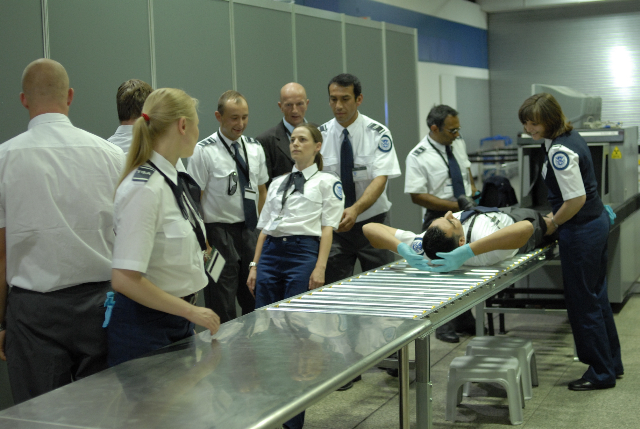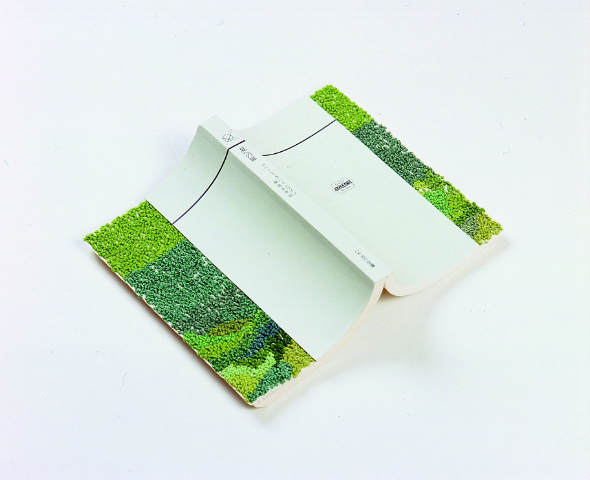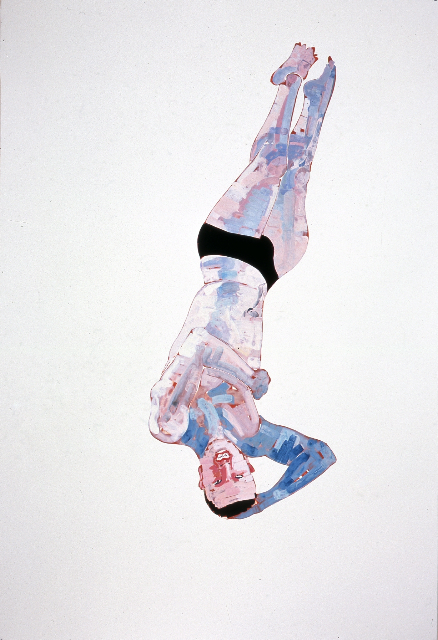by Owen Schaefer
A group show without a theme can be difficult to discuss, but an adventure to explore. And the National Art Center Tokyo’s latest annual show Artist File 2010, cites no central theme, no age or nationality limitations, and the only reason given for having chosen the show’s seven artists is that they reflect the “reality of the era.” The exhibition therefore becomes more like a series of solo exhibitions, with conclusions left to be drawn by the viewer.
Things open enigmatically, with two of Kaoru Minamino’s large ceramic sculptures. ‘Constructions’ might be a better word to use for the works, since Minamino fits his handmade hexagonal forms into machine-like parts, or perhaps carbon nanotubes. The works have the physical presence of something engineered and functional whose use is lost to us. But it seems a shame that only two works are included.
Paintings by both O Jun and Toru Kuwakubo failed to inspire a great amount of interest for me. It is, however, tempting to contrast O Jun’s almost digital simplification with Kuwakubo’s fantasy landscapes filled with objects―a beach of graves, a warehouse-sized atelier containing more things than any real such room could hold. In Kuwakubo’s world objects accumulate, in O Jun’s they seem to abstract themselves.
The only non-Japanese entry this year comes from Dutch artist Aernout Mik, whose videos Touch, Rise and Fall and Osmosis and Excess are patient and sometimes surreal, meditations on their subjects, and well worth a long viewing. And in Osmosis and Excess, as perhaps with Kuwakubo’s paintings, there is a Gursky-esque sense of pattern, repetition and abundance that permeates the scene.
Chisato Saito’s photography also seems determined to multiply objects, as she uses air bubbles as tiny lenses to focus the blurred background of her shots. It is a more recent twist on Saito’s ‘particle’ ideas, but sadly the effect wears thin after moving through two rooms filled with nearly identical works.
The climax of the program arrives with Takashi Ishida’s animated painting work. In Unasaka and Emaki / Wave he reconsiders the scroll, painting an unfolding series of patterns on a long sheet of paper, which are then rendered in dizzying animation. In the film, the paintings seem to create themselves line by line as the viewer soars above. In Wall of the Sea, Ishida plays with projected images of the ocean, as it seems to spill out of the projection and inundate a room before the tide pulls it back again. Ishida’s work suggests the forces of time, nature and creation at work, and serves as a great closing.
But any exhibition with an entrance and an exit will write its own story in the minds of viewers. And this is a lesson best learned from a visit to Naoyo Fukuda’s The Winged, where the artist has folded each page of several Japanese books in half, rendering them vaguely bird-like and revealing only a single sentence from each book. Moving down the line of standing books, the sentences begin to form a disjointed narrative, linking unrelated texts into a story. Fukuda’s study of the physicality of books and their words against the flexibility of meaning is by far the best segment of the show, and proof that where themes are not provided, the human mind will invent one. Artist File 2010 doesn’t quite have the impact of last year’s show, but like Fukuda’s winged books, it’s a story still waiting to be interpreted.
Show: Artist File 2010: The NACT Annual Show of Contemporary Art (to May 5)
Gallery: National Art Center Tokyo (Roppongi station)
Hours: 10am–6pm (Fri to 8pm, closed Tue)
Admission: 1,000
Tel: 03-5777-8600
www.nact.jp











